Crooked Letter, Crooked Letter
by Tom Franklin
[Book]
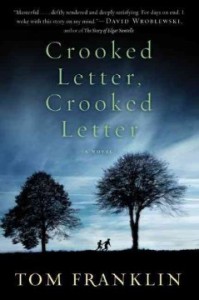
view/request
A character-driven mystery set in rural Mississippi, we are slowly drawn into the stories and lives of Silas “32” Jones, a constable who twice daily has to direct traffic when the shift changes at the local mill, and Larry Ott, a mechanic who has been ostracized from the community. Larry and Silas were secret friends as children, both on the outside, Larry a white boy in a mostly black school who would rather read Stephen King books than do most anything else, and Silas as a poor black boy with a single mother, recently moved from Chicago. They play and fish in the woods, until a neighbor girl goes missing while on a first date with Larry. Now, 20 years later, another girl has gone missing and the suspicion is back on Larry. The story goes back-and-forth between the two timelines, with an increasingly complex network of connections. Check out this ‘rural noir.’
Reviewed by Molly
Tagged: Fiction, Mississippi, Mystery
Head
by Bob Rafelson
[DVD]
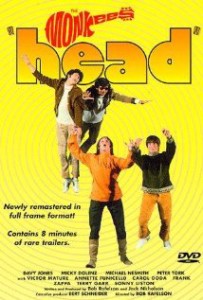
view/request
Head is a psychedelic, non-linear motion picture starring… THE MONKEES. While not participating in a traditional narrative, the film retains a cyclical structure. Cyclical, in this instance, by that one can take nearly any scene, rearrange it and the action will still relate and have meaning in its new place. Bob Rafelson, a co-creator of the Monkees television series, made his feature directorial debut with 1968’s Head. He co-wrote the film with the then obscure Roger Corman school B-movie actor Jack Nicholson.
Rafelson and Nicholson sought to tell the Monkees story and the complexities of instant fame in an abstract fashion while also exploiting as many genres as possible. It poses the question, “well, what is Head?” A musical? A western? A horror film? A comedy? A boxing story? A Vietnam war protest? A sprawling adventure film? It’s safe to say these are all correct answers. The director uses esoteric dialog and cutting edge technology (i.e. the process of coloring film… which was essentially only explored in avante-guarde cinema up until this time) to collect these disparate elements and house them in a single story.
What also works in this film’s favor is that we have a collection of some of the Monkees best recorded material. Mickey Dolenz sings two lazing and beautiful Carole King compositions along with the Eastern flavored “Can You Dig It”, a song by Monkey Peter Tork. Peter’s other writing credit comes with the groovy freakout “Long Title: Do I Have to Do This All Over Again”. Davy Jones performs a dance scene with Toni Basil while singing Harry Nilsson’s Tin Pan Alley inspired “Daddy’s Song”. Michael Nesmith writes and sings “Circle Sky”, what we shall only consider as a psychedelic, ramshackle ho-down.
Although, in 1968 the film proved to be an immense commercial failure, Head has become a cult classic and an excellent artifact in the colored history of the Monkees. Rafelson continued his maverick approach to cinema and is now considered one of the most revered directors and producers of the “New Hollywood” generation.
Reviewed by Jason
Tagged: Comedy, Feature film, Musicals
Two Escobars
[DVD]
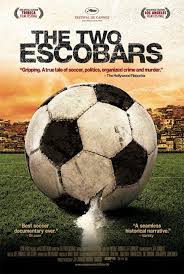
view/request
This riveting documentary film was made by Northampton natives Jeff and Michael Zimbalist as part of the excellent ESPN 30 for 30 series. It examines a harrowing period in Colombia’s history when rival drug cartels were warring in the streets and the national soccer team set out to win the world cup and by extension, create a new positive image for their country. The Two Escobars of the title are Andres Escobar, the softspoken but inspiring captain of the National Team, and Pablo Escobar, who was a notorious cartel leader and brutal drug baron, but also a team owner and folk hero to many poor people in Colombia. The documentary takes a clear eyed look at a period of Colombian soccer and society which stretched from the height of the phenomenon known as “Narco-Soccer” through their ignominious and ultimately tragic loss in the first round of the 1994 World Cup. Like many of the 30 for 30 series filmmakers, the directors succeed in showing the importance and influence of sport on society as a whole, how it reflects and is influenced by the best and worst aspects of our culture. As a result the film appeals to viewers who are not die-hard sports fans, ‘soccer’ fans or familiar with World Cup Football. One of the best of the ESPN 30 for 30 series and best documentaries of 2010, it was an Official Selection at the Cannes, Tribeca and Los Angeles Film Festivals.
Reviewed by Dylan
Tagged: Colombia, Documentary, Soccer
Fish Tank
[DVD]
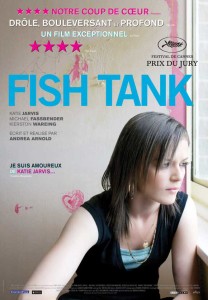
view/request
This Cannes Jury Prize award winning indie film from British Director Andrea Arnold captures an English ‘Coming-of-Age’ tale far from the stereotypical pastoral village green. Set in a bleak Essex council estate, the films energy and success is derived mainly from the talented young lead, Katie Jarvis. Jarvis was discovered yelling at her boyfriend across platforms at a local train station by the casting director after numerous unsuccessful auditions for the role by better known and established actresses. The film centers on the adolescent conflicts of her character (Mia) and her discovery of dance as an escape and outlet from fights with her family and peers. Unlike so many dance related films, Arnold wisely avoids the typical clichés of the genre, with no dance-offs, miraculous improvements in skill overnight or extended montages showing a sudden rise to fame. Instead Mia’s dancing is shown for what it is, a creative outlet and escape rather than a possible career choice. Without laboring the point, the film contrasts Mia’s love of and desire to learn the basic skills of ‘break-dancing’ with the hyper-sexualized dance moves of her peers, who are plainly mimicking popular music videos. The introduction of her mother’s new Irish boyfriend (played by rising heart throb Michael Fassbender) expands and ultimately threatens Mia’s fragile world . His influence on Mia and her selfish and neglectful mother and charming and foul mouthed little sister is, by turns, both inspiring and disturbing. Arnold, who won an Oscar in 2003 for her short film Wasp, directs the film with a skilled hand, anchoring it in social realism without wallowing in cliché or misery. It is decidedly not a light hearted family film but also not without hope or joy.
Reviewed by Dylan
Tagged: England, Feature film
The Thousand Autumns of Jacob De Zoet
by David Mitchell
[Book]
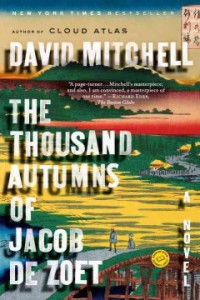
view/request
The latest work from the prodigious literary talent David Mitchell, author of Cloud Atlas and Black Swan Green, follows the eponymous Jacob De Zoet, a young Dutch accountant who arrives in feudal japan in 1799 on a quest to earn enough of a fortune to marry his love upon his return to Holland. The strength of Mitchell’s characterizations, his mastery of dramatic construction and the humor and grace with which he treats his characters is evident throughout this historical tale, as he fleshes out a world previously unimagined by the reader without ever delving into dull description or awkward exposition. The continued joy of discovery prevails even when the story takes dark and despairing turns for the protagonist. Highly recommended for fans of Mitchell, contemporary fiction and historical novels alike.
Reviewed by Dylan
Tagged: Fiction, Historical fiction, Japan
Pride and Prejudice and Zombies
by Jane Austen and Seth Grahame-Smith
[Book]
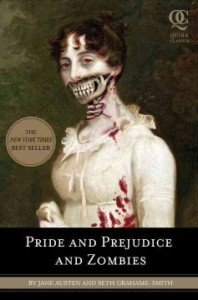
view/request
The Regency classic meets Buffy the Vampire slayer in this hilarious mashup of Austen’s best-known novel with flesh-eating undead. England is in the grip of a plague of zombies and the Bennet girls are keeping them at bay thanks to their arcane training in “the deadly arts.” Elizabeth is distracted from her battle against the zombies by the arrival of Mr. Darcy, who is also well known for his swordsmanship. Will she marry him? Will she get her brains eaten? Most importantly, can the rotting bodies climbing out of their graves cause enough mayhem to disturb the manners of the country gentry?
Reviewed by Faith
Tagged: Fiction, Parody
How to Become a Scandal
by Laura Kipnis
[Book]
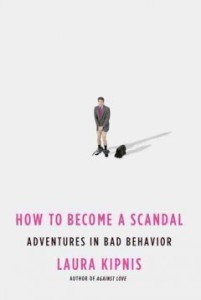
view/request
Who doesn’t love a scandal? In this book, Kipnis explores the how and why of scandalous behavior, including what makes the rest of us such eager consumers of other’s downfalls. She focuses on four juicy tales from the recent past at some depth , but always with a light touch: Lisa Nowak, the lovelorn astronaut; disgraced New York judge Sol Wachtler; “memoir” writer James Frey; and Linda Tripp, Monica Lewinsky’s confidant who encouraged her pursuit of President Clinton and then betrayed her. If you’ve ever wondered, “What were they thinking?” How to Become a Scandal attempts to answer that question.
Reviewed by Forbes Library Staff
Tagged: Celebrities, Non-fiction, Psychology
Juliet, Naked
by Nick Hornby
[Book]
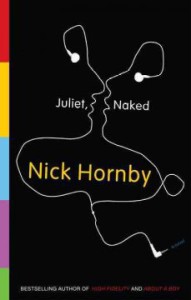
view/request
No one writes about the extremes of being a fan like Nick Hornby. Juliet, Naked tells the story of Tucker Crow, an obscure American rock musician who hasn’t been heard from in 20 years, his obsessive English fan, Duncan, who maintains a “Crowology” website and Annie, Duncan’s girlfriend, who has gone along for the ride. All of their worlds are turned around when a long-lost demo of Tucker’s original hit is released and Annie posts some opinions of her own.
The
audiobook version is especially enjoyable, with Bill Irwin and Jennifer Wiltsie reading alternating chapters, with music by Ben Miles.
Reviewed by Forbes Library Staff
Tagged: Fiction, Music
Let the Great World Spin
by Colum McCann
[Book]
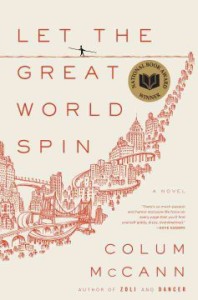
view/request
A tale of Manhattan in the 70’s, of a remarkable man who walked on a wire strung between the top of the two trade center towers, and of some of the various and sundry people who watched him from below. An anguished Irish monk, a black hooker and her prostitute daughter, a Park Avenue matron mourning her son who died in Vietnam, a twenty-something artist, and a Guatemalan nurse, interact and come together in unpredictable ways. The characters are engaging and real; and the story, written beautifully, won the National Book Award.
Reviewed by Sara
Tagged: Fiction, Irish monks, Manhattan, World Trade Center towers
Now
by Bhagavan Das
[Music CD]
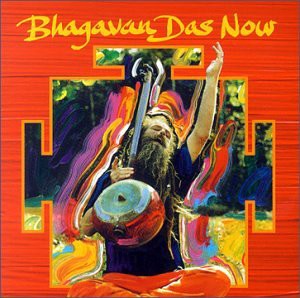
view/request
This is a very interesting recording. Bhagavan Das sings traditional kirtans and bhajans, or devotional songs, from India, and his performance shows his deep familiarity with these traditions while simultaneously embracing a very modern sound. This is in part due to Das’ collaboration with the album’s producer, Mike D of the Beastie Boys, who contributed samples and loops which give the album a very modern feel, but don’t, perhaps surprisingly, feel the least bit out of place. In addition, Das is accompanied by a wide range of musicains playing instruments from the east and from the west, traditional and modern. We hear guitars and ektar, drum sets and tabla, sarangi and synthesizers, harmoniums, organs, and conch shells. We can also hear the influence of the blues, the Beatles, and traditional Indian singing styles.
Every track on this album is powerful, energetic, and alive. Every word is heartfelt. I’ve only had a chance to listen to this album once so far—but I’m very much looking forward to listening to it again.
Reviewed by Ben
Tagged: Hip-Hop, Religion, Yoga
Nonviolent Communication
by Marshall Rosenberg
[Audiobook]
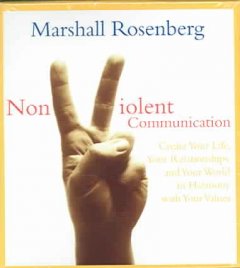
view/request
Nonviolent communication, also known as compassionate communication, is a language of empathy, respect and connection. Dr. Rosenberg developed the program based on his long experience in conflict resolution. The underlying concept is that emotions are based on needs, and that seeking to understand your own and the other’s true needs and feelings leads to peaceful interactions where everyone is more likely to get their needs met. Appropriate on any scale, it’s been helpful to me so far in personal, professional and business relationships, and Rosenberg has used it to mediate and resolve conflicts between ethnic groups and governments throughout the world. It is a truly idealistic vision of how every one of us can create a more compassionate world through learning and applying caring communication.
Also available as a
book.
Reviewed by Faith
Tagged: Communication, Non-fiction, Psychology
While Mortals Sleep
by Kurt Vonnegut Jr.
[Book]
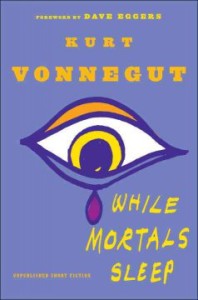
view/request
In his touching preface, writer Dave Eggars refers to Kurt Vonnegut Jr. as a “hippie Mark Twain”. Never has Vonnegut’s appeal been described so accurately. While Mortals Sleep features unpublished, short fiction pieces by the Slaughterhouse- Five, Breakfast of Champions and Cats Cradle author. This is the second posthumously released collection (the first being Look At the Birdie) and it focuses solely on the author’s early work before receiving literary notoriety. In these stories, we get a preview of themes and tones that will exist later in his most famous writings: mainly bizarro science fiction and his select brand of acerbic wit and humor (this is where we mostly relate his Twain influence).
In these rich stories, we encounter the mother and widow of a fallen World War II soldier, a restless newspaper man who has no time for Christmas and a scientist who falls in love with a talking refrigerator he’s modeled after his ex-wife. These tales from the young author manage to succeed as classic Vonnegut.
Reviewed by Jason
Tagged: Fiction, Humor, Science fiction












